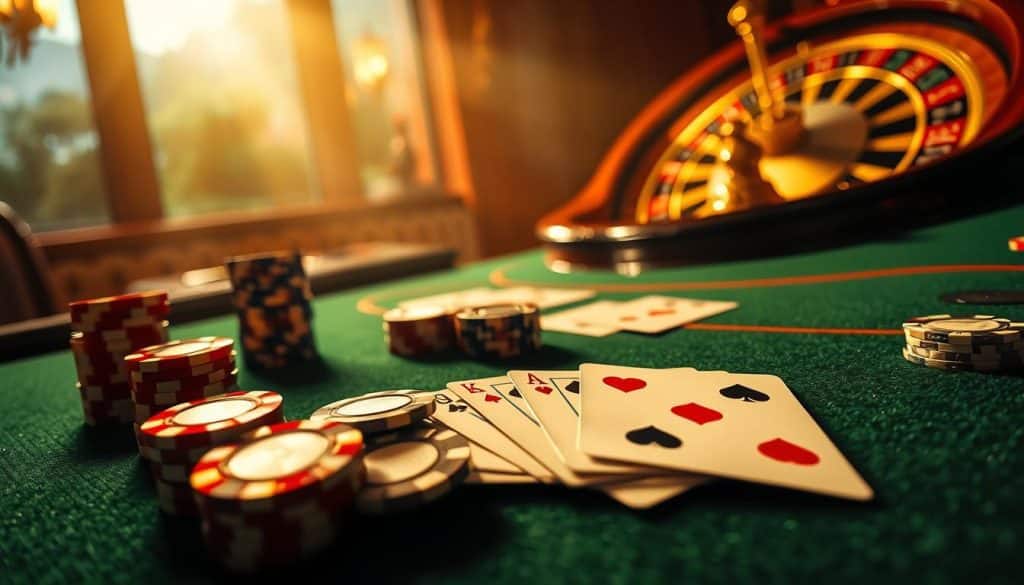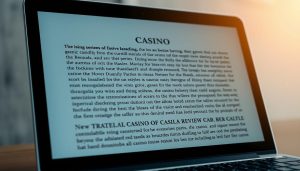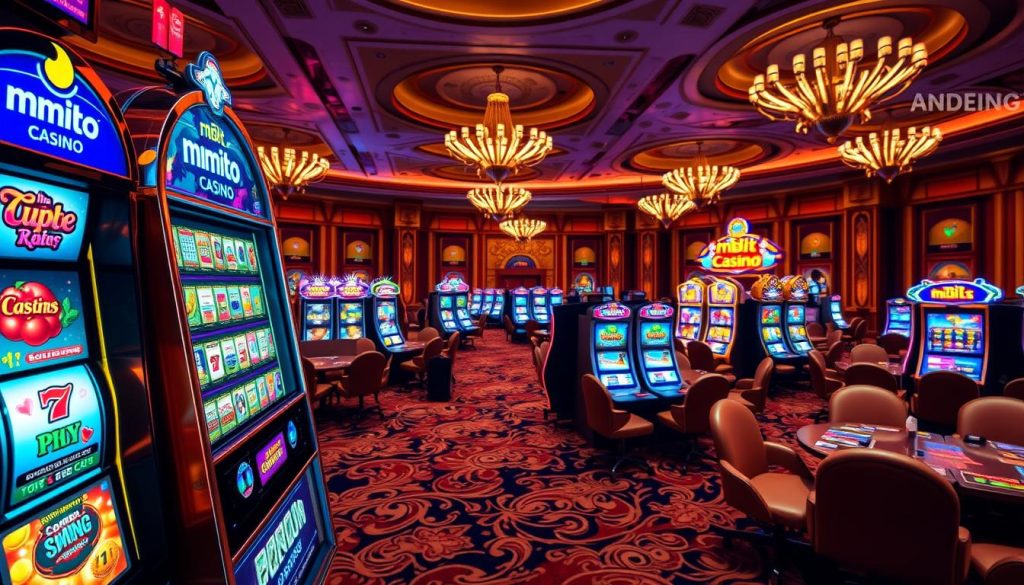About 1 in 20 casual players learn a basic strategy that lowers the house edge. This is surprising, given the simplicity of the game’s core rules. In Auckland casinos and online, I learned that knowing the rules changes the game from guessing to playing smart.
This article is a practical blackjack guide, mixing hands-on tips with data. You’ll learn blackjack basics like card values and game flow. Options like hit, stand, double, split, and surrender are covered too. I’ll also talk about moving from casual play to becoming a serious player in New Zealand.
I wrote this guide with a product-review style. It includes technical tips, play metrics, and examples from the community. You’ll see how rules and casino settings affect outcomes. Plus, I’ll show you tools like strategy charts and practice apps. A visual guide on odds and the house edge is coming later.
My tone is personal and down-to-earth. I’ll share my experiences, what worked and what didn’t. Understanding blackjack is key for better results, whether you’re playing at a table or online.
Key Takeaways
- Learning core blackjack rules cuts the house edge and improves decision-making.
- This blackjack guide covers card values, game flow, and all player options.
- I combine real-play experience in New Zealand with industry data and stats.
- Tools like strategy charts and simulators will be reviewed for practice.
- The article includes visual odds breakdowns and future trends for online play.
Introduction to Blackjack
I grew up with the glitz of casino nights and the thrill of blackjack. Here, I’ll outline the game’s roots, its appeal among Kiwi gamers, and the goals players have. This introduction paves the way for the detailed guide that follows.
Brief History of Blackjack
Blackjack has evolved from 17th to 18th-century European games and the French Vingt-et-Un. Over time, it transformed into the game we know today. Changes in payouts and rules, like dealer peeks and using multiple decks, formed today’s blackjack.
Big events and TV tournaments solidified these changes. Coverage often shows game changes due to new house rules or side bets. Understanding these historical shifts is key for any guide on blackjack.
Popularity in New Zealand
New Zealanders enjoy both land-based and online gambling. Auckland and Christchurch feature big casinos that attract locals and tourists. Smaller venues and tournaments keep the game interesting across the country.
Online gambling offers play for those with busy schedules or living far from big cities. This ease of play attracts more players, affecting how blackjack is taught to newbies in NZ.
Overview of Game Objectives
The goal is simple: beat the dealer and don’t go over 21. A two-card Ace and a ten-valued card make a blackjack, which usually pays 3:2.
Players choose to hit, stand, double, or split. Meanwhile, the dealer must follow certain rules. These rules ensure the game runs smoothly. Later, we’ll look at how these goals turn into strategies and how betting influences decisions.
Basic Rules of Blackjack
The first time I played blackjack at a casino was nerve-wracking. I had to learn the rules quickly from the dealer. I’ll share the basics here to help you play with confidence, whether at a table or online.
Understanding Card Values
Cards numbered 2 through 10 are worth their face value. Jacks, Queens, and Kings are all 10 points. Aces are special, worth either 1 or 11, depending on what helps you more.
An Ace counted as 11 makes your hand soft. For instance, Ace and 6 together is soft 17. A hard hand doesn’t use an Ace or counts it as 1, like 10 plus 7.
I play soft hands boldly because they’re more forgiving. You might hit or double down on soft 17. But with hard 17, it’s often best to stand. These choices can lead to more wins.
The Flow of the Game
You start by sitting down and betting. Everyone, including the dealer, gets two cards. One of the dealer’s cards is face down in American games.
Players take turns deciding whether to hit, stand, or something else. Once players are done, the dealer goes by fixed rules, like hitting up to a certain point. The dealer has no choice in their actions.
Games end with payouts for winners, returns for ties, and special payouts for blackjacks. The use of multiple decks or continuous shuffling machines affects the game. These devices change how often cards are shuffled and the overall flow.
Player Options Explained
Hit means taking another card. It’s good if your hand is low or the dealer’s upcard suggests it.
Stand is when you keep your total to avoid busting. I do this when hitting doesn’t seem to offer a better outcome.
Double Down is doubling your bet for one more card. It’s smart when you have a total of 10 or 11 versus a dealer’s weak card.
Split is when you divide a pair and bet on both hands. Split Aces or 8s, but think twice before splitting 10s. This can turn weak hands into two potential wins.
Surrender lets you give up half your bet to fold a very bad hand. Early surrender is rare, but late surrender can save money.
Insurance bets against a dealer’s blackjack if they show an Ace. It pays 2:1, but most players should avoid it. I only consider insurance with a strong count.
Games in physical casinos can be slower, with breaks for shuffling. Online blackjack is quicker. Different rules and speeds can affect when you might double down, split, or surrender. Always check the table’s rules first.
| Action | When to Use | Typical Restriction |
|---|---|---|
| Hit | Low totals or when strategy advises | No restriction |
| Stand | Strong totals or dealer shows strong upcard | No restriction |
| Double Down | Totals like 9–11 vs weak dealer upcard | One extra card only |
| Split | Pairs such as Aces or 8s | Some casinos limit resplitting; split Aces often get one card |
| Surrender | Very unfavorable hands vs strong dealer upcard | Late surrender more common than early |
| Insurance | Dealer shows Ace | Generally poor expected value for player |
Strategy Basics for Beginners
The first time I played at a casino in Auckland, I tried to rely on gut feelings and skill. It didn’t work well. But as I played more, I learned that having a simple, based-on-facts strategy made things easier. This section will help you understand the basics of blackjack. It will show you how to play with confidence.
Importance of Basic Strategy
Using a basic strategy chart can really lower the house edge. It’s like in golf, where you figure out the best moves and stick to them. Once I followed the chart closely, my game nights became more predictable. Instead of hoping for big wins, I focused on small, sure gains.
Tips for Making Decisions
At the table, follow simple rules. Always split Aces and 8s, and never split tens. If you have a 10 or 11, double down when the dealer’s card is low. Always stand if your cards add up to 17 or more. And if you have a soft 17 or less, hit or stand based on what the dealer has. These steps are based on math and help you make quick, smart choices.
Look out for the game’s rules and your money. Play where blackjack pays 3:2, the dealer stands on soft 17, and you can double after a split. Picking the right table makes the strategies you use even better.
Common Mistakes to Avoid
Ditch the insurance bets; they almost always benefit the house. Don’t try to win back what you’ve lost; it only raises the risk and can mess up your money management. Avoid making choices based on a hunch; straying from the basic strategy ups the uncertainty.
A lesson from reporting on law enforcement and e-bike safety sticks with me: sticking to rules avoids big mistakes. The same is true in blackjack. Hold tight to fundamental strategies, protect your money, and treat the strategy as a guide, not just a set of suggestions.
Advanced Blackjack Strategies
Starting off with advanced play means knowing the basics of blackjack. You should also understand its rules well. It’s not enough to just look at charts; playing in a busy casino is a different game. I’ll give you tips that mix useful advice with important math.
Card Counting Overview
Card counting is watching the balance of high to low cards left to play. It helps you know your advantage. The Hi-Lo system gives points to different cards: +1 for low (2–6), 0 for neutral (7–9), and −1 for high (tens and aces). You keep a tally and adjust for the number of decks in play.
A high true count means you might win more, so you bet higher. But, there are limits, like shuffle machines, that make it hard. Counting in a busy casino is tough. You need a long game, sharp focus, and to not get caught. Some places, like in Auckland and Las Vegas, can even kick you out.
Betting Strategies
How you bet changes the game’s ups and downs more than just winning. Flat betting means you always bet the same. It’s safer but misses out when you have a good chance to win more.
Some strategies like the Martingale make you double your bet after losing. This can seem good but can lead to big losses quickly. I had to stop using it after it erased my wins in one go.
Betting based on your edge, like with the Kelly strategy, means betting more when you have an advantage. It helps increase wins while keeping risk low. Just know, big changes in your bet size might get you noticed. Staying under the radar while still upping bets when the count is in your favor is key.
Variations in Game Rules
Even small rule changes can affect the casino’s edge. Playing with one deck instead of six can help the player. And, what the dealer does with a soft 17 can also change your chances; standing is better for you.
Rules that let you double after a split or offer late surrender are good for you. The payout ratio is also crucial; 3:2 is much better than 6:5. Online games often have different rules that can make the game faster or more challenging, so they’re different from playing at a casino.
| Rule | Player Impact | Typical Edge Shift |
|---|---|---|
| Number of decks (1 vs 6) | Single-deck favors player; fewer ten-cards dilution | Up to −0.5% with single-deck |
| Dealer stands vs hits on Soft 17 | Stand improves player’s chance on soft hands | About −0.2% when dealer stands |
| Double after split allowed | Gives flexibility to capitalize on good hands | Roughly −0.1% advantage to player |
| Late surrender | Cut losses on poor starting hands | Up to −0.08% benefit |
| Blackjack payout (3:2 vs 6:5) | Lower payouts severely hurt long-term return | 6:5 can add +1.4% house edge |
Pairing card counting with smart betting and picking the right rules is key to winning. Keep track of your play, practice with simulators, and study the rules at each table before putting down a lot of money.
Blackjack Variants and Their Rules
I’ve played various tables and learned how small rule differences impact the game. Here, I’ll talk about three blackjack variants and their effects on strategy and managing money.
Classic Blackjack
Classic blackjack is where most players start. In New Zealand and beyond, a natural usually gets a 3:2 payout. Dealers standing on soft 17 is common, but some let the dealer hit, so always check the table rules.
You can do a lot in classic blackjack: double after splits, split pairs, and sometimes surrender. These options are crucial for your strategy. But if casinos change a rule, like no surrender or dealers hitting on soft 17, the house’s advantage changes. To understand how decks affect returns, check out this analysis on single vs multi-deck.
European Blackjack
European blackjack is a bit different. The dealer gets one open card and waits for your move before taking their second card. This changes when you can buy insurance or decide on splits and doubles.
In Europe, you often can’t double or split as freely. The dealer waits to check for blackjack, which adds risk to your doubles. Seeing it as a more cautious game helps, especially when options to double or surrender are tight.
Progressive Blackjack
Progressive blackjack adds a jackpot side bet. You bet extra for a chance at the progressive jackpot, triggered by specific hands like suited blackjacks or four-of-a-kinds.
The main game might be just like classic blackjack, but the side bet is riskier and increases the house edge. I’ve tried these bets online and, while exciting, they’re not great for keeping a steady bankroll.
| Variant | Typical Dealer Action | Player Options | Effect on House Edge |
|---|---|---|---|
| Classic blackjack | Stand on soft 17 (common) or hit (some casinos) | Double, split, surrender (varies by table) | Baseline; small rule changes add 0.2–0.7% |
| European blackjack | No hole card until player play ends | Doubling/splitting sometimes restricted | Increases player risk versus classic |
| Progressive blackjack | Follows classic rules for main game | Side-bet required for jackpot eligibility | Side-bet raises house edge substantially |
Blackjack Odds and House Edge
A simple truth always comes back: small rule changes affect long-term outcomes. Here, I explain the house edge concept. This includes what it means for players in New Zealand’s casinos and online sites.
Understanding the House Edge
The house edge means the casino’s advantage over time, shown as a percentage of bets. It shows the average loss per bet across many hands. With smart play, the edge can be less than 0.5% for single-deck games with good rules. Bad rules can push this over 2%.
Playing smart is crucial. The right moves lower the house edge to the minimum. Wrong moves increase your expected losses. I see the house edge like an engine. It moves the game’s return based on rules, decks, and payouts.
Odds for Players
You’ve got about a 4.8% chance for a natural blackjack in single-deck games. That number helps guess your short-term chances. The chance of busting changes with your hand. For instance, starting with 12 means about a 31% bust chance on the next card. Higher totals mean higher risks.
The dealer’s upcard affects your odds too. A 6 for the dealer means they might bust more. An ace gives the dealer an edge. Knowing these changes helps decide when to hit, stand, double, or split.
Statistical Breakdown
I’m preparing a graph. It’ll compare the house edge across different rules, like deck numbers and blackjack payouts. The graph will show how these changes, like 3:2 to 6:5, can increase the house edge by 1.4% to 1.6%.
This comparison shows how different rules affect the house edge and your odds.
| Rule Variant | Decks | Dealer S17 vs H17 | Blackjack Payout | Typical House Edge |
|---|---|---|---|---|
| Favorable single-deck | 1 | Stand on S17 | 3:2 | ~0.5% |
| Common multi-deck | 6 | Stand on S17 | 3:2 | ~0.6%–1.0% |
| Fast, player-unfriendly | 6 | Hit on S17 | 6:5 | ~1.8%–2.5% |
| Tournament-style | 4–6 | Varies | 3:2 or adjusted | Varies; needs event model |
Small changes in rules are big deals. Online casinos in New Zealand might use more player-unfriendly rules if not checked. Use this information to pick the best tables, understand promotions, and make smart plans for your money and time.
Tools to Improve Your Game
I have a small toolkit for practice that I built from trial and error. These tools make learning faster and help me make clear decisions when studying online blackjack rules or looking at a blackjack guide. Short practice sessions with specific goals are the most effective for me.
Blackjack Strategy Charts
Strategy charts are mainly of two types: single-deck and multi-deck. They’re laid out simply. The rows show player totals and soft hands, while the columns list the dealer’s upcard. To find the advised move for any dealer card, just read across.
Pick the chart that goes with the game rules you’re playing. Using the wrong chart can lead to mistakes. I keep several laminated charts handy for quick reference. Having something you can look at easily beats trying to switch between tabs while learning.
Online Simulators
Simulators let you go through thousands of hands quickly. I try out rules and strategies using reliable casino practice areas and simulator websites. This gives me real data on different strategies.
Some top-end simulators give detailed statistics, similar to what poker players might look at. These reports tell you which errors are costing you. Using simulators has made it easier for me to find small edges and spot poor moves.
Apps for Practice
Useful mobile apps fall into three categories: basic strategy trainers, hand simulators, and card-counting trainers. The best ones allow changes to deck count, whether the dealer stands, and rules on doubling.
Good apps mimic real shuffles and let you adjust the rules. But be careful with apps that deal from a perfect deck. Real casinos don’t shuffle that way. Think of app results as helpful hints rather than exact answers.
Combining strategy charts, regular use of simulators, and focused app training has sharpened my instincts. This approach is more effective than just reading a blackjack guide.
Frequently Asked Questions (FAQs)
I often get the same questions, both in Auckland and online. This FAQ offers clear responses to common questions about blackjack rules, how to play, and useful steps you can start with. Read through each section slowly. Try these ideas at low stakes before you increase your bets.
What is the Best Strategy for Beginners?
Begin with a basic strategy chart that matches the table rules. This chart guides you on when to hit, stand, double, or split. It helps cut down the house edge. Don’t chase losses like I did at first; setting session limits helped me stabilize my gameplay and stress.
Stay away from insurance and most progressive side bets. Although they seem appealing, they increase the house edge. Utilize blackjack faq and guides that provide charts for different games. Commit to one chart until you know it by heart. Learning this way is more effective than guessing.
How does Dealer Play Differ from Players?
Dealers must follow strict rules. They hit until they reach at least 17, including a soft 17, if the rules say so. Dealers aren’t allowed to split, double, or surrender. They make their move after all players.
This makes the dealer’s actions predictable. You can use this predictability to your advantage in strategy and when counting cards in specific situations. Understanding dealer rules is key to improving your blackjack play over time.
What Happens in a Push?
A push is when the player and dealer tie. You get your original bet back, and no money is lost or won. Common examples include both having a total of 20.
Details are important. If both have blackjack, it’s usually a push, depending on the rules. Some casinos check for dealer blackjack first, affecting insurance and surrender decisions. Always check the specific rules at your table before playing.
| Question | Short Answer | Practical Tip |
|---|---|---|
| Best beginner strategy | Use the correct basic strategy chart for the table | Practice the chart until decisions become automatic |
| Dealer play vs player | Dealer follows fixed rules and acts last | Exploit predictability when choosing plays |
| What is a push? | Tie; bet returned | Confirm blackjack payout rules and dealer peek policy |
| Insurance and side bets | Generally poor long-term value | Avoid most unless you understand specific odds |
Conclusion: Mastering Blackjack Rules
I’ve laid out the basics so you can hit any blackjack table confidently. Know the card values, how a hand flows, and your choices: hit, stand, split, double. Using a solid strategy consistently is key. It reduces the game’s randomness and cuts down the casino’s advantage. Also, choosing the right table matters. Look for games with rules that help the player.
Practice turns theory into skill. Use those strategy charts and simulators I talked about. I divide my practice time between online drills and visiting a local Christchurch casino. This mix helps me get better faster than just playing randomly.
To learn more, check out blackjack strategy books and online resources. I will add a section with stats and tools in the full article. Including insights from Gambling.com, the guide also addresses how rules and regulations shape the game. Note that online blackjack in New Zealand might see more multi-deck games and faster play unless there are changes in regulations.
Use the tools and tips I’ve given you. Keep a detailed log of your practice. Choosing the right table is also part of being strategic. With dedication, the ideas in this guide will become instinctive. Then, your success at blackjack will be about smart decisions, not just luck.










